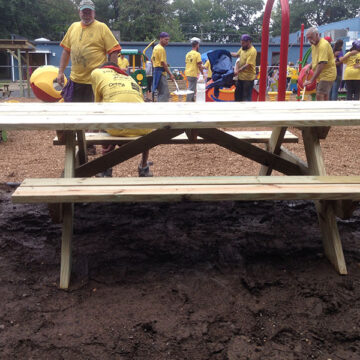Adults and children appreciate having plenty of seating areas in and near their playspace. Picnic tables provide seating, which encourages supervision when placed near a playground. Also, picnic tables provide opportunities for groups of people (families, friends, community members) to socialize and enjoy one another’s company. The Accessible Picnic Table comes with the added benefit of allowing adults and children with differing levels of mobility use the table together!
Seating
How to build an ADA picnic table Link copied!
